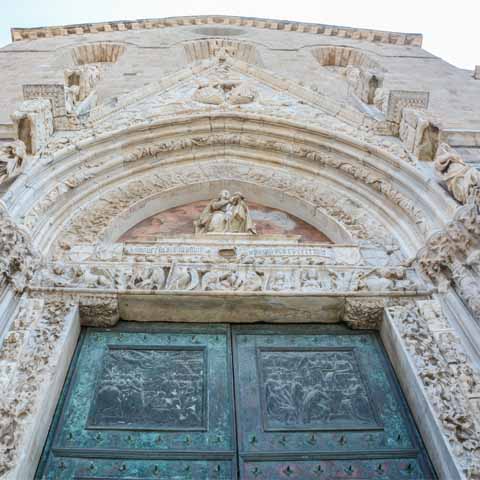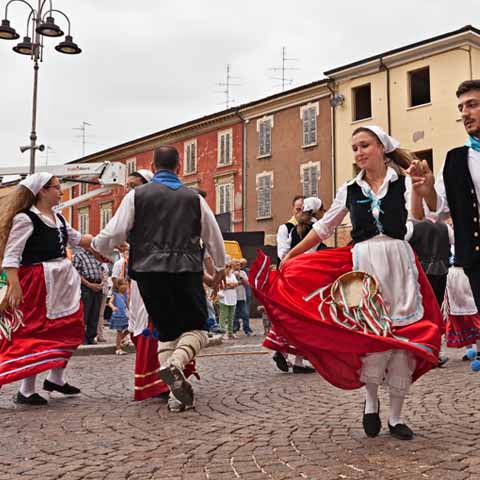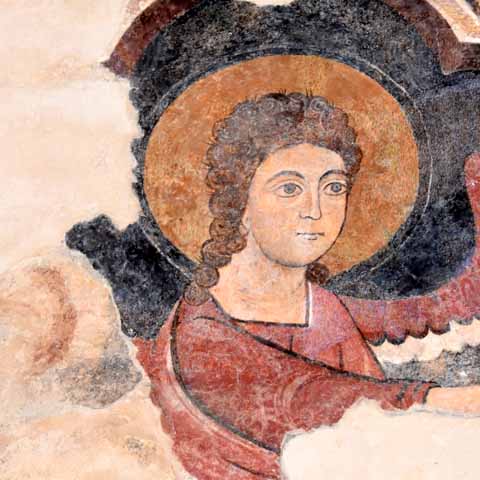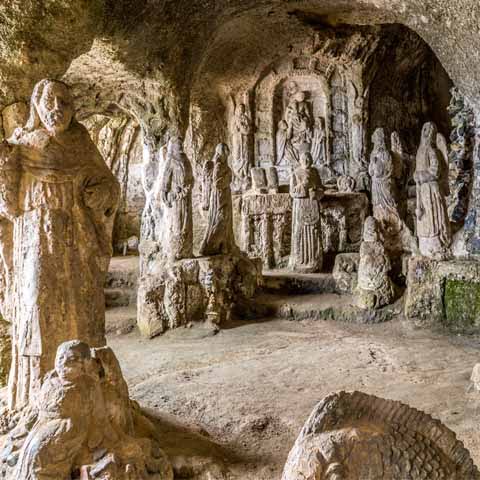Reggio Calabria is a city located at the foot of the western side of Aspromonte, on the eastern shore of the Strait of Messina.
Included in the Aspromonte National Park, the city suffered huge devastations during the disastrous earthquakes that shook Southern Italy in 1783 and 1908.
Completely rebuilt after the disasters, today Reggio Calabria is a modern city arranged in a chessboard pattern with right angles and a layout that stretches along the Mediterranean coast.
The regional capital of Calabria, Reggio has ancient roots. It was probably founded by the Greeks, who gave the name to the settlement, then later conquered by the Romans due to its strategic importance. A gateway towards Sicily, Reggio Calabria constitutes a nodal point between peninsular Italy and the island.
Today, Reggio Calabria is an archiepiscopal and university seat, but is also an important city that based its development on the tourism and services sectors.
PREHISTORY OF REGGIO CALABRIA
According to historians, Reggio Calabria has ancient origins and was perhaps founded in the eighth century BC by the Greeks. The colony emerged after the tribe of Chalcis left its original settlement, Euboea, after a severe famine.
Although it was initially believed that the Chalcis founded the settlement on their own, evidence shows that the Messenians, a civilization linked to the Peloponnese, were also involved in the foundation of the city. However, it was the Greeks who gave the city its name, and it is believed that Reggio derives from Reghion, the name of a Greek colony that means “to forcefully separate.”
Archaeological evidence scattered throughout the municipal territory testifies to the ancient origins of the city.
The ancient history of Reggio Calabria was marked by flourishing times, but also by wars and natural disasters. Initially, Reghion was governed by an aristocratic government, modified by a democratic constitution established by Caronda, the legislator of Catania. Under his rule, Reggio Calabria lived in an orderly fashion for about two centuries.
The alliance with the Locri against Crotone in the sixth century BC marked the beginning of the decline of the settlement.
The Chalcis line gradually lost its importance in favor of the Messenians. In 476 BC, Anaxila put an end to the oligarchic government in the city, and later, Reghion allied with Carthage in a war that ended with the victory of the Greeks.
In 393, the Syracusan tyrant Dionysius I threatened the territories of Reghion, but the crisis was resolved with a truce that involved payment of tributes to Syracuse.
Following numerous wars against the Locri, whose territory bordered the territory of Reggio compromising its development, Dionysius I attacked Reggio Calabria again in 387 BC. After eleven months of siege, the city was conquered and the surviving population was deported to Syracuse.
HISTORY OF REGGIO CALABRIA
Reggio Calabria was rebuilt by Dionysius II of Syracuse and was given the name of Phebìa. In 270 BC, after alternating vicissitudes, Reghion became an ally of Rome and was granted the statute of municipium in 89 BC.
During the Imperial Age, Reggio Calabria knew a period of development under the Romans, although it retained the Greek language and traditions. Saved from the general decadence that struck the region in the upcoming centuries, the city lived a prosperous period until the third century AD.
In 410 AD, Reggio Calabria was destroyed by Alaric I, and after the fall of Rome the territory became the center of bloody struggles and repeated revolts.
In 549, Totila conquered the whole territory. The Byzantines followed and established their rule in the sixth century. The Byzantines brought prosperity to the city and under emperor Basil I, the episcopal seat of the Byzantine possessions in Southern Italy was established in Reggio Calabria.
Under the Byzantines, the city experienced an economic and social revival, but this flourishing period came to an end at the beginning of the tenth century, when the Arabs conquered the city and massacred the inhabitants.
After a short period of struggles and riots, the Byzantines reassumed possession of the territory in 909, and Reggio Calabria once again became the administrative center in Southern Italy, the seat of the Duchy of Calabria, and the center of the Greek Church.
Under the Byzantines, Reggio Calabria lived a new flourishing period characterized by population growth and economic revival.
Although dominated by the emirs of Palermo between 1001 and 1027, the city maintained its strategic importance and administrative autonomy.
But in 1060, Robert Guiscard conquered Reggio Calabria, which was an event that marked the end of the Byzantine domination in the region. Naming himself Duke of Calabria and assigning the bishop seat to the orbit of the Roman pontiff, Guiscard’s rule did not bring wealth to the region.
After Norman rule, the history of the city coincided with that of the region, following the events of the Anjou and Aragon dominations. During this entire period, Reggio Calabria maintained its position as the regional capital.
In 1282, the city was involved in the revolts of the Sicilian Vespers, supported by the house of Aragon, against the Ionians. The subsequent War of the Vespers took its toll on the city but with minimal consequences, and after the peace of Caltabellotta in 1302, the city was assigned to the Anjou, who granted numerous prerogatives and communal liberties to the municipality.
In 1404, Nicola Ruffo, the Count of Catanzaro, conquered Reggio Calabria on behalf of Luigi d’Anjou, and in 1411 the city, together with the whole region, was conquered by Ladislaus the Magnanimous, the King of Naples.
With the advent of Alfonso the Magnanimous in 1443, Reggio Calabria became definitively subdued to the Kingdom of Naples, and from then on, the course of the history in Reggio Calabria identified itself with the history of the Kingdom; the events also caused Reggio to lose the title of regional capital until 1465, when it was restored by Ferdinand I.
During the fifteenth century, the city went through a phase of consistent development, largely in part of the large-scale launch of silk production. However, the instability of the Kingdom of Aragon quickly brought this growth to an end.
In the sixteenth century, under Spanish rule, a long period of decline began due to heavy taxation and frequent Muslim incursions.
For safety, the city lost its statute of capital of Calabria Ultra and the regional capital was first transferred to Seminara, and then to Catanzaro.
Under the Spaniards, who favored the introduction of the cultivation of bergamot throughout the region, Reggio Calabria once again entered into a period of revival. Along with silk production and silkworm breeding, the cultivation of bergamot became the main industry in the following centuries.
But the eighteenth century marked the beginning of a terrible succession of disasters and natural calamities in Reggio, and in the whole region of Calabria. The plague struck the region in 1743, followed by a period of famine and a tremendous earthquake in 1783. At the same time, after a brief period of Austrian domination, the Spaniards restored their dominion in Southern Italy, and Charles of Bourbon established his reign on the throne of Naples.
This innovative and enlightened sovereign brought wealth to the region from an economic and social point of view. The General Cadastre and the Supreme Commercial Court were established In Calabria, while the merchant fleet was strengthened. However, these reforms suffered a severe blow from the earthquake of 1783.
Reggio Calabria was devastated and remained a victim of degradation for a long time. Opposing the French domination, the region suffered further ruthless acts and repression.
After the Congress of Vienna in 1815, the Bourbons were succeeded by Ferdinand IV, who in Southern Italy took the title of Ferdinand I of the Two Sicilies. In 1816, Reggio Calabria was elevated to the rank of capital of the new province of Calabria Ultra Prima formed by the union of Calabria Citeriore.
The role played by the institution of the capital contributed to considerable development of urban infrastructures and industries, as well as administrative and judicial structures.
The revolutions in Europe in 1848 also had important repercussions in Southern Italy, Reggio Calabria included. The city took part in the Risorgimento uprisings against the Bourbons but was deeply affected by the events of the following year. The revolt was repressed and order was re-established in Reggio Calabria by a City Guard.
However, the reign of the Bourbons was coming to an end, and it was definitively inflicted by the troops of Garibaldi in 1860.
After the unification with the Kingdom of Italy, the history of the city followed the regional and national history. Today, Reggio Calabria is a cultural hub for the Calabria region and an important travel destination in Southern Italy.
ARCHEOLOGY IN REGGIO CALABRIA
Archaeology is well-represented in Reggio Calabria, and one of the most noteworthy places from an archaeological point of view is the National Museum of Reggio Calabria that houses numerous local and regional artifacts. The Civic Museum of Reggio Calabria, which was inaugurated in 1882, also houses important permanent collections.
The excavations conducted in numerous sites in Reggio Calabria and all of Southern Italy at the beginning of the twentieth century marked the implementation of a new legislation on the protection of artistic and archaeological heritage. This legislation gave rise to a state collection and the creation of the Superintendence of Antiquities of Calabria and Lucania.
The National Museum of Reggio Calabria is currently set up only on the ground floor of the building, and the general plan divides the collections based on the age of the artifacts. Numerous archeological evidence belongs to Magna Graecia, confirming the Greek origins of the city.
The museum also includes medieval and modern collections, and all exponents are divided into separate categories.
Prehistory is documented since the Paleolithic by a Mousterian station found near Scalea, and the Neolithic era is also well-represented with pottery and other materials, including vases and tools.
An epigraphy collection includes a series of Greek inscriptions from the Archaic, Classical, and Hellenistic-Roman ages found in Reggio Calabria, but also in other municipalities, including Locri and Crotone. Latin and Italic inscriptions document the passage of peoples in the territory. Hellenistic and Roman sculptures from various locations in Calabria and Lucania are also exhibited in a dedicated collection, including funerary monuments and other artifacts.
The archaic and classical Reggio is represented by a collection of terracotta and ceramics from the sixth and fifth centuries BC, including Ionian, Corinthian, and Etruscan artifacts. Other prehistoric discoveries from the fourth century BC are also exhibited in the museum.
Among the open-air sites, the sacred area of the Archaeological Park of Griso-LaBoccetta is one of the most noteworthy. Some of the most famous artifacts discovered in the Park are currently exhibited in the National Museum of Magna Graecia in Reggio Calabria.
The necropolises and the Hellenistic tomb in Via Demetrio Tripepi are other noteworthy places from an archeological point of view.
Numerous archaeological sites, the Greek city walls, Roman public baths, and other sites outside the Greek city walls constitute further attractions and bring important evidence of the numerous peoples that populated Reggio Calabria over the centuries.
Don't just see Italy, live it.
Your dream trip to Italy has never been closer
No more endlessly scrolling travel sites. Our travel experts will craft the perfect, one-of-a-kind trip just for you.

300+
DESTINATIONS
We offer more Italian destinations than any travel site. Do and see more with Trips 2 Italy.
1 (of a kind)
ITINERARIES
Because your dream trip to Italy should be designed for you, not for the masses.
100%
PEACE OF MIND
From flights and accommodations, to food and activities - we take care of every detail.






